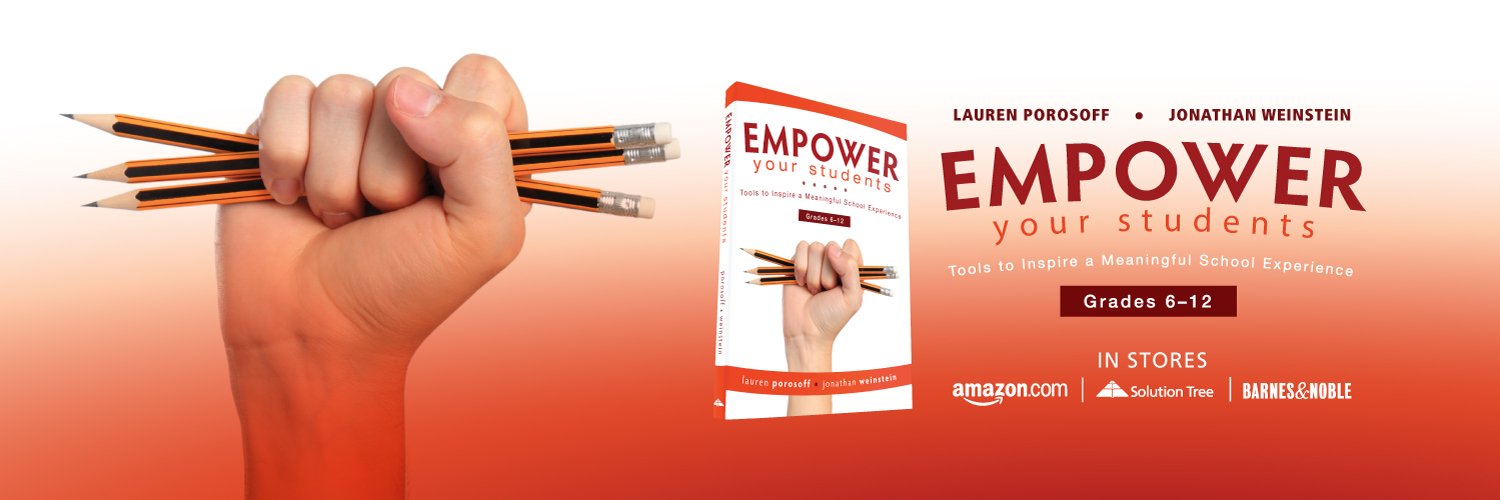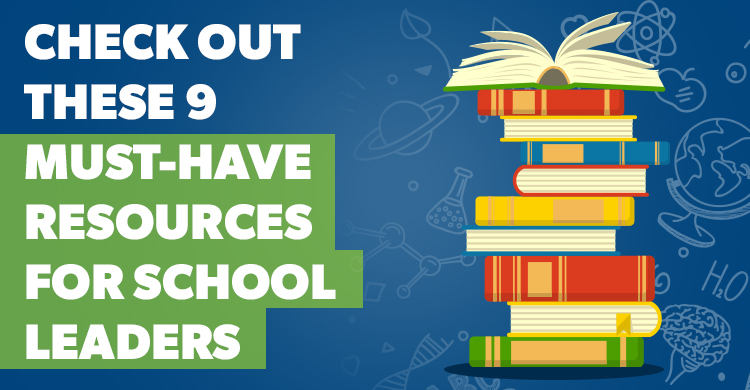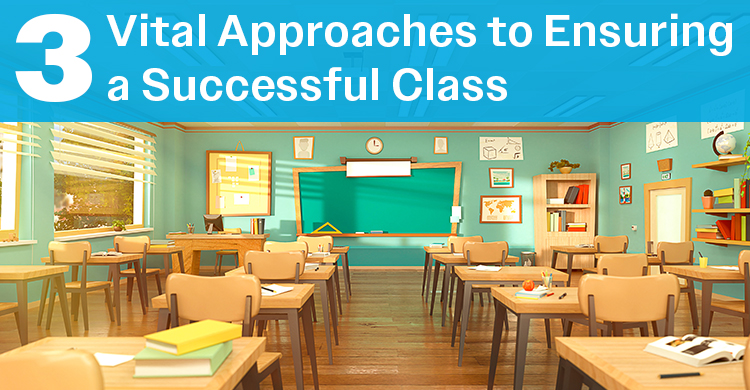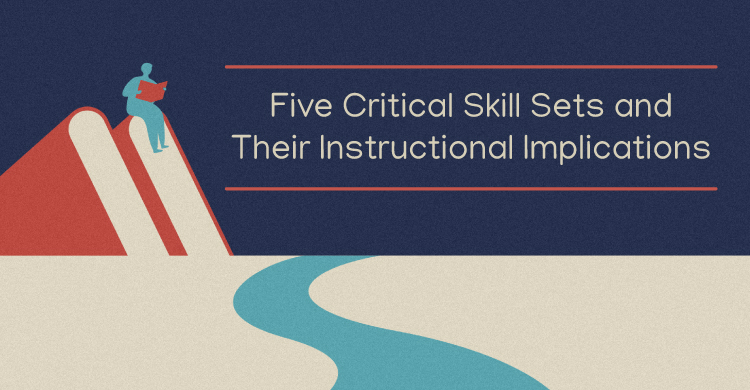This blog post is based on the book EMPOWER Your Students: Tools to Inspire a Meaningful School Experience.
Academic portfolios can reveal what students can do and what they need to work on next. They might also reveal interesting correlations, such as whether students do their best work individually or collaboratively, in a particular subject or format, or even at a particular time of year. Perhaps most importantly, portfolios can provide the students themselves with a tangible record of their learning, with all of the associated struggles, opportunities, discoveries, risks, and rewards. But what should go into an academic portfolio?
When we first introduced portfolios at my school, we asked students to identify pieces of work they were most proud of. We gave each student a folder, figuring that if they wanted to include a poster or sculpture or anything else that wasn’t 8½ x 11 and flat, they could take a picture. When managing the folders became a struggle, we switched to online portfolios.
But the problem we encountered wasn’t logistical. Prompted to make portfolios based on what made them proud, students tended to include work because they got a good grade, not because they were proud of what they created or what they learned in the process. If we measure success with grades, of course our students will want As, feel proud when they achieve them, and have trouble feeling proud of their work when they don’t get the grades they want. Even though we asked our students to identify work they were proud of, they couldn’t get past academic status as measured in our terms.
In later years, we attempted to keep students from selecting work based only on their grades by imposing more guidelines:
- Choose a piece of work that you put a lot of effort into making. What exactly did you do when you put in a lot of effort? What does “effort” look like for you?
- Choose a piece of work that you did with a partner or group. What made the collaboration successful? What made it challenging?
- Choose a piece of work that shows your ability to problem-solve. What was the problem, and how did you solve it?
- Choose a piece of work that shows you’ve learned a helpful study skill. What was the skill? How can you use it in other classes?
These kinds of questions forced students to consider their successes beyond grades. Even so, we were still the ones defining success—this time as hard work, collaboration, problem-solving, and study skill development. And for many students, the portfolios became yet another task to perform, in compliance with our expectations and based on our values.
Helping Students Create a Values-Based Portfolio
Instead of asking students to create academic portfolios based on our values, what if we prompted them to create portfolios based on theirs? Let’s see how that could look.
-
Students identify their top three factors in what makes an assignment meaningful to them.
We can begin by asking students to identify three factors that are most important in making a piece of work meaningful. For example, Gia finds work meaningful when it gives her the opportunity to use her creativity, challenge herself, and develop closer relationships with her teachers. For Russell, work is meaningful when he can ask lots of questions, show kindness to his peers, and understand his place in the world. Choosing three different factors helps students notice multiple ways to make work meaningful; choosing only three helps them prioritize what’s most important to them in this moment.
-
Students create a portfolio of work that represents times when they succeeded and failed to make their work meaningful in each of the ways they identified.
Next, students create a portfolio of meaningful work based on their own definitions of “meaningful.” Since Russell finds work meaningful when he shows kindness to his peers, he includes a math test that he studied for with a friend he encouraged and supported. Since Gia finds work meaningful when she’s creative, she includes notes she color-coded when writing a history essay. Even if Russell and Gia didn’t particularly enjoy these assignments or get good grades on them—and even if their teachers think they should have focused more energy on learning the material than on “fooling around” with his classmate or turning her notes “into an art project”—these two students did use their assignments as opportunities to enact their values.
Students also identify pieces of work that represent times when they either didn’t have opportunities to make their work meaningful in each of the three ways, or when they failed to take advantage of those opportunities. For example, Gia includes a science experiment that she found easy but couldn’t make challenging, because she had to perform and report it exactly as instructed. Russell includes a report on Chief Joseph that he based only on information he found in his history textbook and heard in class, when he could have asked more questions about Chief Joseph’s life and accomplishments.
-
Students use their portfolios to start conversations with teachers, parents, and peers about how they can make their work more meaningful in the future.
Once we know what makes their work meaningful, we can help students notice how their behaviors do and don’t serve their values. In class discussions, or through writing prompts, we can ask questions about the work in their portfolios, such as:
- How is the topic of this piece of work important to you?
- If you’d had another week to work on this, what would you do to make it even better?
- If you were to redo the assignment, what would you do differently?
- What skills did you learn from doing these assignments?
- What did you learn about yourself from doing these assignments?
In one-on-one conversations with our students, we can ask more specific questions about how the pieces of work in their portfolios align with their values. Russell’s teacher might ask, “What were some of the questions you asked when you were working on the pond water observation? If you were going to rewrite your Chief Joseph paper, what questions would you ask this time? What are you working on now that you can ask more questions about? What are a few questions you might ask? What can you do that might help you think of more questions? In the future, when you get an assignment and can’t think of questions, how else can you make that work meaningful?”
Such questions help students notice how their behaviors match their values—rather than telling them how their behaviors match ours—and choose for themselves what they want to do next. For Gia, color-coding notes might be an act of creativity, but it might also take time away from actually writing the essay. Instead of suggesting to Gia that she should spend less time coloring and more time writing, her teacher can ask whether writing is an opportunity to challenge herself—which is another way she finds work meaningful. If so, how does Gia want to allocate her time when she gets her next essay writing assignment?
Values-based portfolios can also structure parent-teacher conferences. Instead of only reporting about the student’s achievement, the teacher can invite the parent into a collaborative conversation about how the student might make school more meaningful in the future. Together, Russell’s math teacher and parents (and Russell himself, if he attends his conference) can brainstorm ways he can ask more questions about math, show kindness to his math classmates, and consider the role of math as he discovers his place in the world. Russell can continue these conversations at home with his parents and in class with his peers.
If students create portfolios every semester, they can track changes in what makes their work meaningful. As Gia gets older, she might discover that developing relationships with her teachers becomes less important and that working for social justice becomes more important. Noticing changes in her values might help Gia choose projects, elective classes, and extracurricular activities based on the extent to which they enable her to do social justice work. More generally, revisiting factors in what makes work meaningful can help students relate more flexibly to their own values and to their assignments.
When it’s based on a student’s own definition of “meaningful,” the portfolio becomes more than just another assignment students have to complete. It becomes a way for students to explore and enact their own values.
Reproducible: Creating a Values-Based Portfolio
To me, an assignment is “meaningful” when it provides opportunities to:
(1)
(2)
(3)
| I was very able to (1) ____________ when…
|
I didn’t really (1) _____________ when…
|
| I was very able to (2) ____________ when…
|
I didn’t really (2) _____________ when…
|
| I was very able to (3) ____________ when…
|
I didn’t really (3) _____________ when…
|
For more ideas on integrating community building into student and adult work, read EMPOWER Your Students: Tools to Inspire a Meaningful School Experience.[author_bio id=”1365″]







